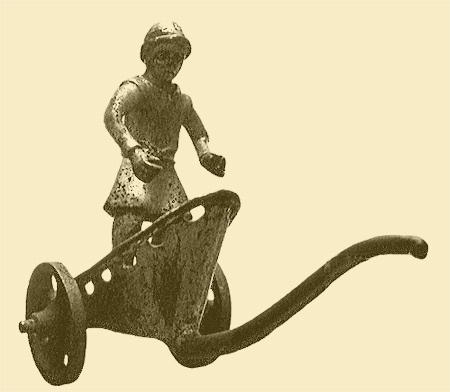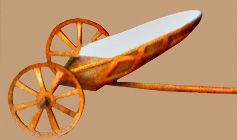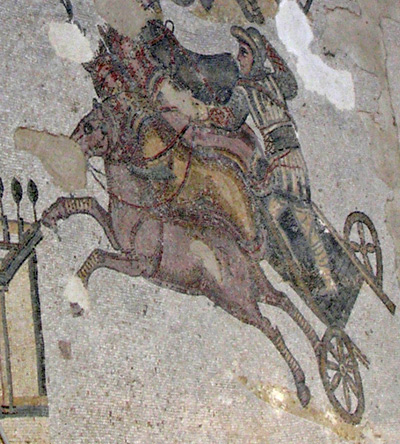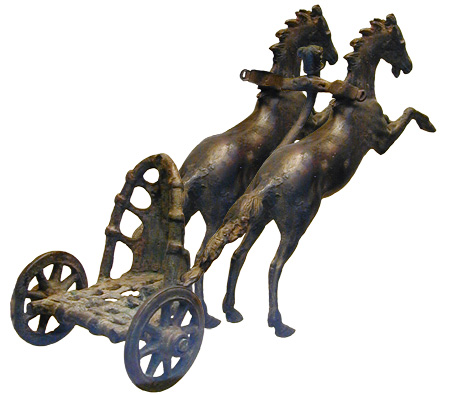

Roman racing chariots were designed to be as small and lightweight as possible. Unlike military chariots, which were larger and often reinforced with metal, racing chariots were made of wood and afforded little support or protection for the charioteer, who basically had to balance himself on the axle as he drove, as can be seen in this statuette from Germany (Mainz Landesmuseum):

The difficulty of maintaining balance in this type of chariot while controlling 4 galloping horses is well illustrated in this mosaic from Piazza Armerina in Sicily:

This bronze figurine from the British Museum depicts a two-horse chariot (biga), though most races were run with four-horse chariots (quadrigae); one of the horses has been restored. Since horses were always harnessed abreast, more than four were uncommon, though races with six- and even seven-horse teams are occasionally mentioned in inscriptions.
